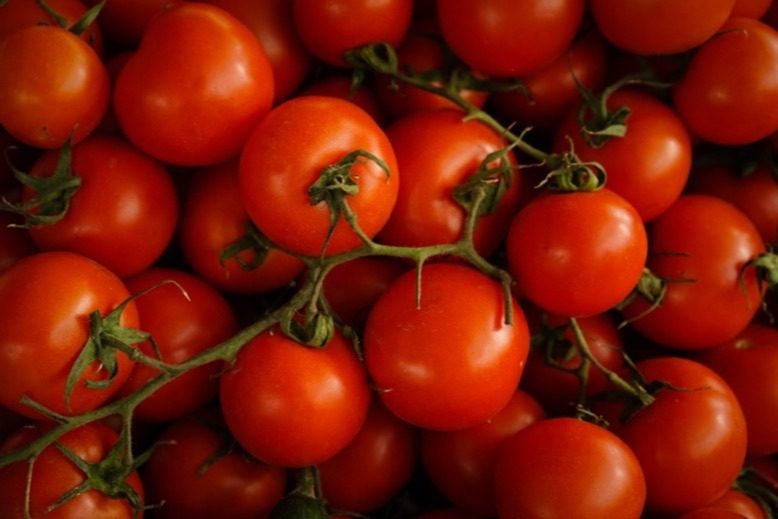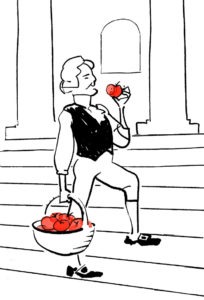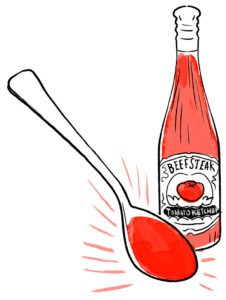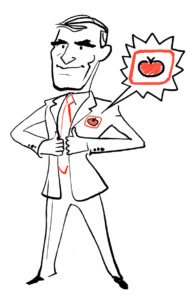
Though there’s more to Italian cooking than this vibrant fruit, it’s difficult to imagine our favorite NJ Italian restaurants without it.
Below, a brief history lesson about the iconic Jersey tomato.

Illustration by John R. Holmes
1812
First commercial tomato farm in the Northeast planted by John Loper on Cumberland County land owned by Dr. Ephraim Buck, who had acquired the seeds in New Orleans.
1820
Robert Gibbon Johnson stands on the Old Salem County Courthouse steps eating a bushel of tomatoes to prove they are not poisonous. Actually, the story was invented by Joseph S. Sickler, a local historian, who published two versions, in 1937 and 1948.
1847
Jamesburg resident Harrison Woodhull Crosby pioneers commercially canned tomatoes, soldering tin lids onto tin cans. The New-York Tribune reports in 1849 that they tasted as though “plucked from the vines.”

Illustration by John R. Holmes
1869
The Joseph A. Campbell Preserve Company is founded in Camden to sell tomato ketchup.
1895
Campbell’s releases first can of beefsteak tomato soup.
1930
The Smoot-Hawley Act adds 50 percent tariff to Italian tomato products. By 1937, imports of tomato paste are cut in half.
1934
Rutgers releases seeds of the Rutgers tomato, a beefsteak variety that ripens from the inside out, ensuring it is evenly red and has high sugar content and low acidity. It falls out of favor with commercial growers because it bruises more easily than other varieties as agriculture mechanizes.
1937
New Jersey tomato acreage peaks at 13,000, yielding 137,800 tons of tomatoes. Yet average yield per acre is down due to a hot, dry summer. Today, 85 years later, New Jersey is 10th in production, yielding around 40,000 tons on about 3,000 acres.

Illustration by John R. Holmes
1981
Governor Brendan Byrne, taking a cue from New York City’s “Big Apple” booster stickers, approves a Jersey tomato embroidery to build brand awareness.
1995
The term “The Jersey Tomato” is promoted by the New Jersey Tomato Council, a collective of 21 farmers based in Cedarville, Cumberland County. Tomatoes sold under the name are processed with a computerized photo system, to assess quality, and handled with care to prevent bruising.
2016
The New Jersey Agricultural Experiment Station at Rutgers releases the Rutgers 250, an improved version of the 1934 original. The first season’s 5,000 seed packets sell out.
No one knows New Jersey like we do. Sign up for one of our free newsletters here. Want a print magazine mailed to you? Purchase an issue from our online store.
